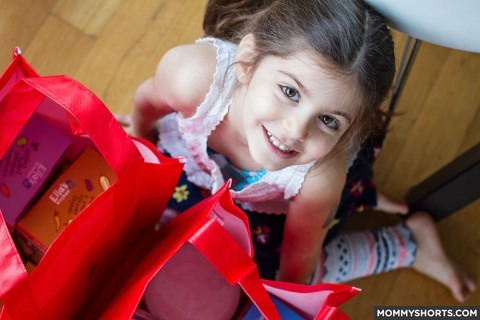
I have done a pretty crappy job teaching my kids to be generous with others. Last Christmas, we gave toys to kids in need but I don’t think Mazzy really understood the spirit of giving.
Instead of just buying toys and sending them to school with Mazzy to put in a dropbox, I thought it would make more of an impact if I took Mazzy with me to pick something out. I told her we were selecting something for a child whose parents didn’t have the means to buy toys themselves.
“Why can’t they buy toys?” she asked me.
“Because some moms and dads don’t make enough money to spend on toys. Their money has to go towards things like food and clothes and shelter first.”
“Okay. Let’s get this My Little Pony toy!” Mazzy pointed to a package on the shelf and seemed like she understood.
“Okay. That’s a great idea!”
“Can I get one too?”
“No, Mazzy. This trip is about getting a toy for somebody else.”
Cue angry face, whines and stomping. Ugh. Clearly, this was something I should be doing more often to drive my point home.
It seems like every post I read about bringing up charitable kids, talks about how the writers’ children have big hearts and innately understand the importance of giving, eagerly gathering their things to help the cause.
My parenting journey hasn’t been quite that smooth. Or Mazzy’s innate sense of altruism isn’t quite as strong as her desire to HAVE ALL THE THINGS. She loves people and her teachers tell me she is always kind and generous to her classmates, but I think it’s a little different when you are speaking about people more in the abstract.
When I told Mazzy we were going to deliver food to feed the hungry to support the “No Kid Hungry” campaign supported by Earth’s Best and Ella’s Kitchen, she was intrigued.
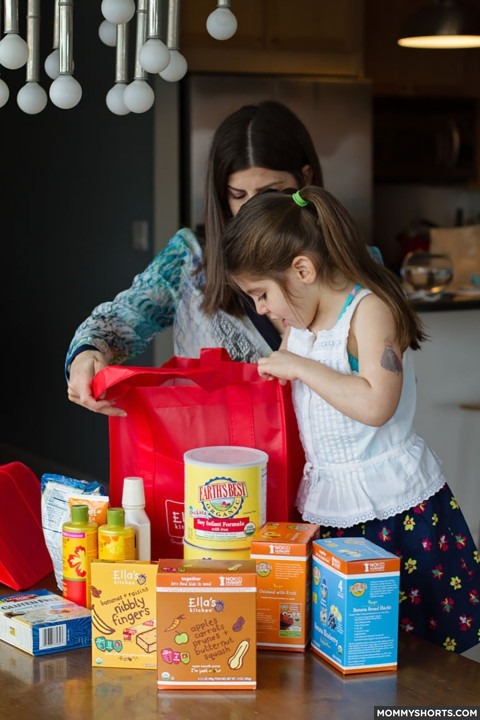
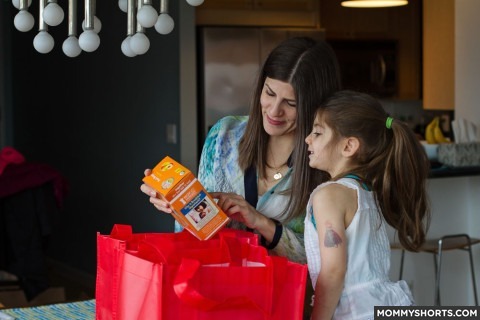
But not for the right reasons.
“It’s food for kids?”
“Yes.”
“Will I get to play with them?”
“No. The kids won’t be at the food drop-off. But the people there will make sure the food gets to the kids that need it.”
“Oh.” Mazzy’s mouth turned down. She was disappointed and suddenly not interested.
This is hard. I’m not sure what I am supposed to say to get her to understand the value and meaning of charity. Little kids are self-centered and hopefully empathy comes with age?
I talked to my sister (a school psychologist, known around my blog as Dr. B) and asked her for tips to help better instill these values in my five-year-old. She was helpful, as always.
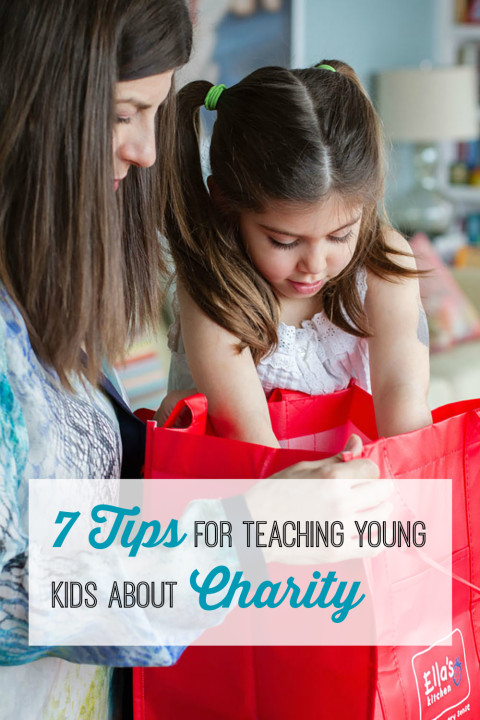
7 Tips for teaching Young children about charity
1) Create a culture of giving at home. SHOW your kids how to give back vs. just talking about it. Actions speak louder than words, so practice what you preach!
2) Find opportunities to volunteer or give back to local charities. Young children have a hard time understanding complex issues happening around the world. By participating in local projects, it will be easier for them to grasp their efforts and perhaps see the impact firsthand.
3) Talk to your kids about what they are passionate about. Then you can brainstorm how to turn their interests into opportunities to give back.
4) Give your kids an allowance and have them set aside a portion every week for giving. It does not have to be a lot. The goal is to make charity a natural part of their routine.
5) Create meaningful projects to help loved ones or friends in need. This can include making meals or a basket for a sick friend, organizing a fundraiser, or participating in a walk to support a cause related to something someone you know is going through.
6) Empower your children. Telling them they are making a difference provides them with the confidence they can make a positive change in your local community or even the world! You can even show your kids examples of child-led charity projects so they can see a child of any age has the ability to make an impact.
7) Don’t worry about upsetting kids by telling them about those who are at a disadvantage. The joy they get from giving will ultimately make a bigger impression than any sadness to which they are exposed.
Mazzy and I put together two bags of food to take to The Bowery Mission, which is about fifteen blocks and a couple avenues away from our apartment. We took a cab over together and delivered it ourselves.
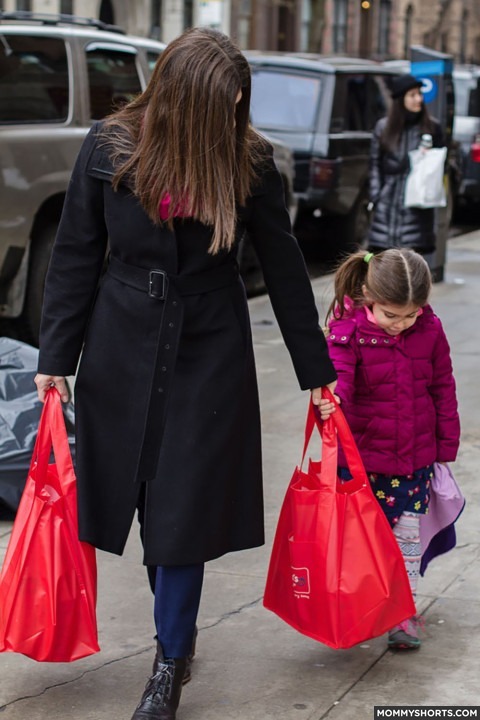
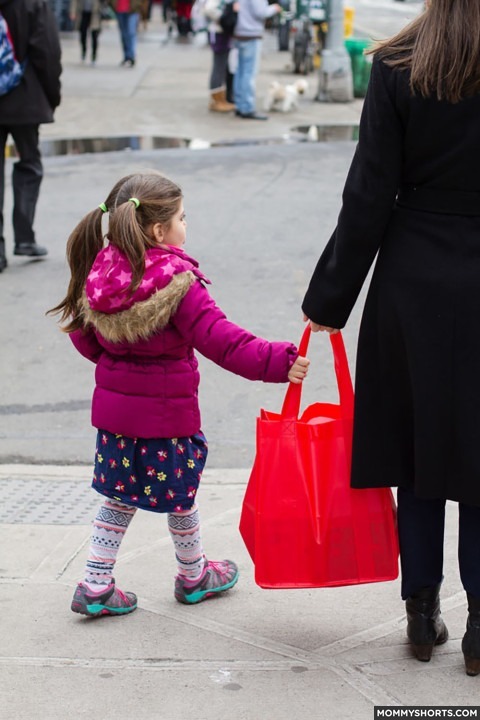
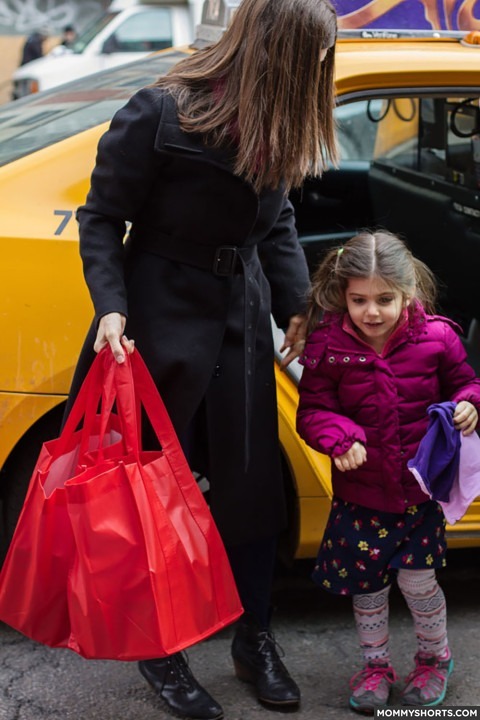
A man approached us as soon as we opened the front door, asking if we were there with a donation. I showed him our two bags and said they contained things like formula and baby food. The man took the bags, handed us a receipt and we were done. We were there for under a minute and made the entire transaction while standing in the open doorway.
“That’s it?” Mazzy asked when we walked back onto the sidewalk.
“Yes. It’s very easy to help people.”
Maybe that’s a good first lesson for Mazzy to understand.
Ella’s Kitchen and Earth’s Best have donated funds to the “No Kid Hungry” campaign providing 1.5 million meals to kids in need (you can find specially marked packages at select Walmart stores).
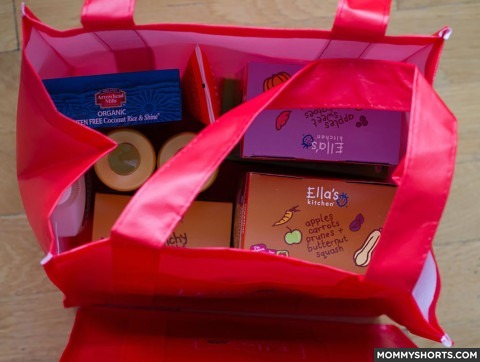
To help encourage other families to teach their kids about the importance of charity, you can give food in your community and share photos on Instagram tagging @mommyshorts, #FeedKidsinNeed and #NoKidHungry.
I will be selecting one winner from the hashtag so that Ella’s Kitchen and Earth’s Best can gift that person an $100 Walmart gift card to create their own basket to donate to the charity of their choice!
As for me, I hope to make charity a bigger priority for my family. Seeing how easy it is to give and what a small amount of time it took, is an important lesson for me too.
———————————————
This post was sponsored by Ella’s Kitchen and Earth’s Best, but all thoughts and opinions are my own.
Photo credit: Karilyn Sanders Photography













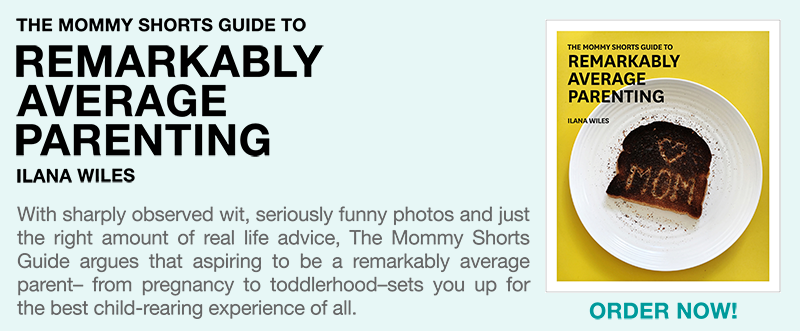



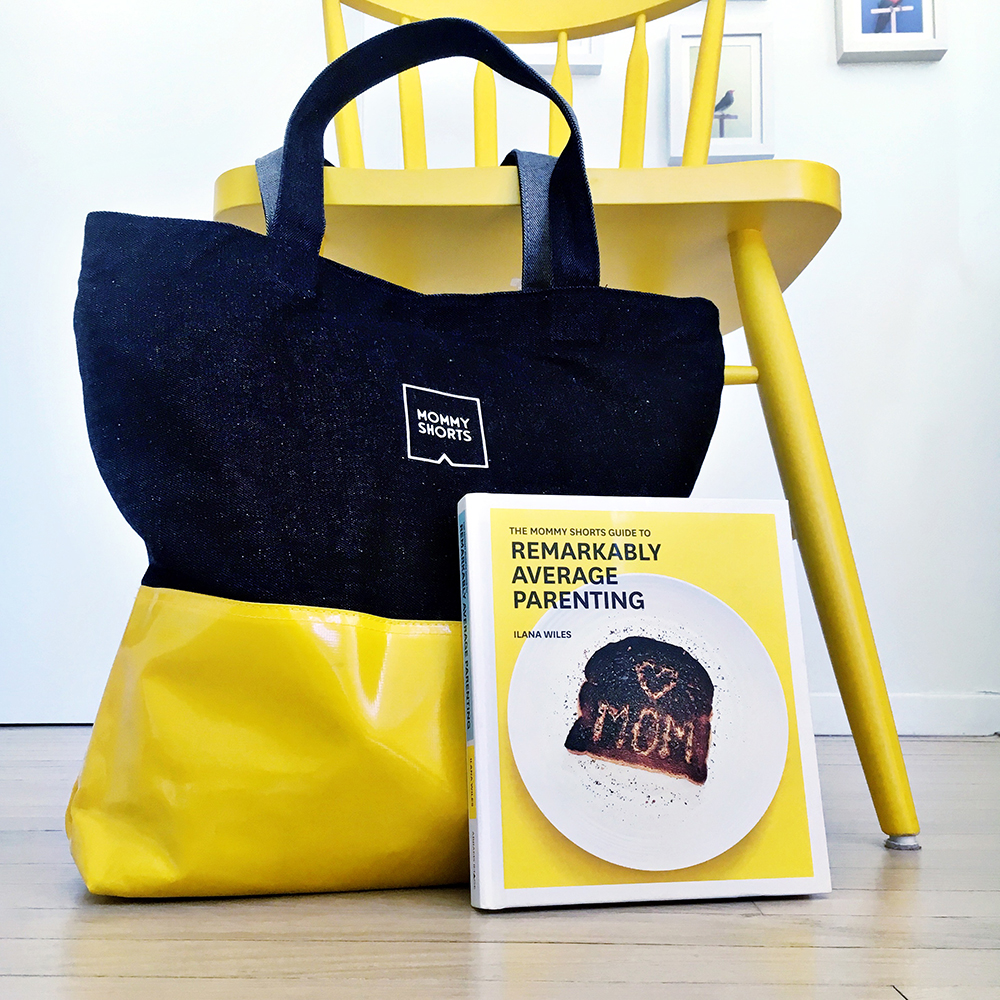
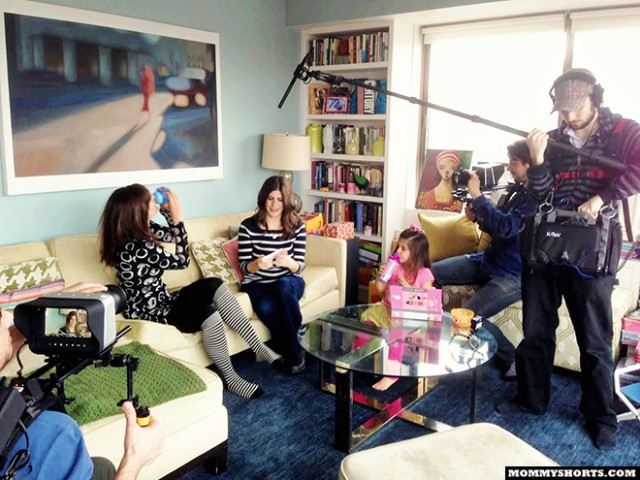






Join the club! I try to teach my kids about being kind and generous, but I don’t think they quite “get it”? Thankfully, we are comfortable and my kids have everything they need (and too much of what they want), but I don’t want them feeling entitled. I take them with me when we donate to the food pantry or gifts to shelters etc. We pick up trash in our community and help our neighbors to be good citizens, but I know we could do do much more!
You get a receipt for donating food to a food bak/shelter? I ask as I am not American and never heard of that.
Yes, so you can submit it for tax purposes. In the US, you get some money back if you do something charitable. We actually didn’t take the receipt since I am working with the companies and that didn’t feel right.
Thank you for doing this article. I have wondered how best to teach my kids about giving and charity. It’s weird to try and explain it to a 3 yr old and sometimes disheartening when they are uninterested or want that toy too. I’m happy to see its a process an the best thing to do is to keep being the example.
Thanks again!
I have found it really hard to find an organization that allows young kids (I’d say under 12) to actively participate, such as a food bank or shelter. So while my son is good at packing up old clothes and toys to donate, he does not get to see first hand the affect those actions have.
I don’t know if you’ve ever head of the PJ Library or not, but the Harold Grinspoon Foundation actually sent out these beautiful tzedakah boxes last year to all the PJ Library kids and we’ve been using them at home to help reinforce the idea of charity. Of course it helps that our synagogue also does tzedakah in the religious school each week (we just started going to that this year as Warren was FINALLY old enough this year). And they’ve collected food and coats and blankets and other items through all of the bar/bat mitzvah kids’ projects also – so my munchkins are getting exposed to it a lot through our faith institution. The other thing we do came out of us being a foster family and me being the president of our local foster and adoptive parent association – and that’s that we collect clothing and toys for our kids in care. Warren has been with me when we’ve taken things to our storage unit that we use as the staging point for all our clothes and toys and gear and diapers. He’s asked me many times about the stuff in there and why we do it. He’s also been at our association meetings when we have Farm Share and clothing/toys distribution – so we’ve tried very hard to expose him a lot to the idea of charity. Sometimes I think it is working – especially when he mentions that we should put the quarters we found in the dryer (maybe I should check pockets before doing laundry) in the tzedakah box. But then again sometimes I think I am completely failing – like when he mentioned that he should get a game of checkers too because he saw the game in the storage unit and we really need one. Face-palm. Five years olds are hard creatures to understand some days!
Thank you for posting this! I always feel like my kids really don’t “get it” when it comes to those less fortunate. Glad I’m not alone. Going to keep pressing forward so being charitable becomes a natural part of their lives. I always like to remind them that the people who need help don’t always want others to know they need help and they may even be friends.
I was trying to reply directly under Heather’s post…we are also using the PJ Library tzedakah box for our 3 year old. She loves finding coins on the ground and puts them in her tzedakah box. We’ve made it a part of our weekly life to talk about giving to others and helping others. In the fall we took food to the food pantry and we talked about it for weeks leading up to going. It is very important to our family and I think she is doing a great job of grasping the idea early. (LOVE PJ Library!)
That’s a really great thing to do! We spent a little time this last winter holiday season talking to our 4 year old about giving to others. He got a kick out of putting money in the Salvation Army buckets. He even took some out of his own piggy bank! I think it’s the little things that make the difference.
[…] the world. Teachers, you can incorporate so much of this into your classroom culture and teaching. Parents, you can create a culture of giving and charity at […]
[…] the world. Teachers, you can incorporate so much of this into your classroom culture and teaching. Parents, you can create a culture of giving and charity at […]
[…] The Importance of Teaching Your Kids About Charity […]